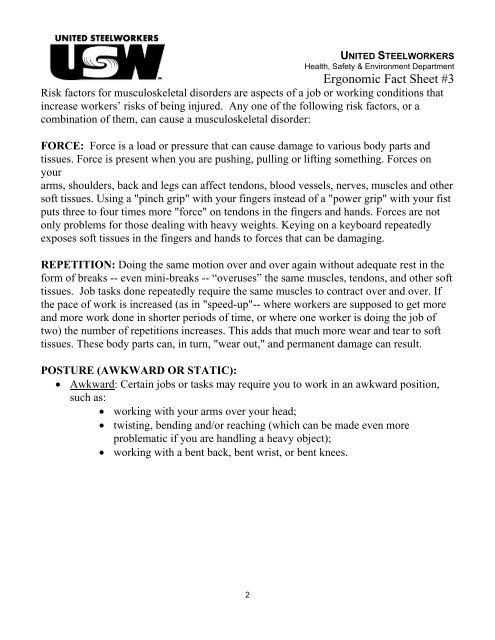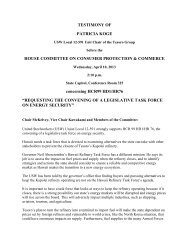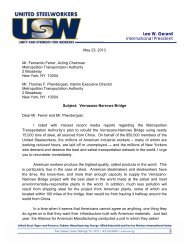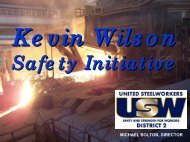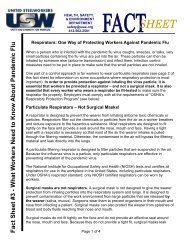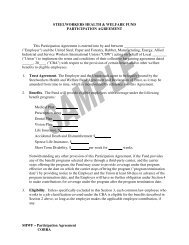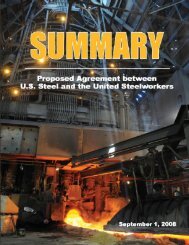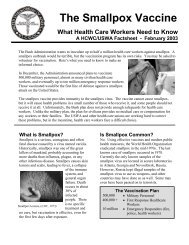Ergonomic Fact Sheet #3 - United Steelworkers
Ergonomic Fact Sheet #3 - United Steelworkers
Ergonomic Fact Sheet #3 - United Steelworkers
You also want an ePaper? Increase the reach of your titles
YUMPU automatically turns print PDFs into web optimized ePapers that Google loves.
UNITED STEELWORKERSHealth, Safety & Environment Department<strong>Ergonomic</strong> <strong>Fact</strong> <strong>Sheet</strong> <strong>#3</strong>Risk factors for musculoskeletal disorders are aspects of a job or working conditions thatincrease workers’ risks of being injured. Any one of the following risk factors, or acombination of them, can cause a musculoskeletal disorder:FORCE: Force is a load or pressure that can cause damage to various body parts andtissues. Force is present when you are pushing, pulling or lifting something. Forces onyourarms, shoulders, back and legs can affect tendons, blood vessels, nerves, muscles and othersoft tissues. Using a "pinch grip" with your fingers instead of a "power grip" with your fistputs three to four times more "force" on tendons in the fingers and hands. Forces are notonly problems for those dealing with heavy weights. Keying on a keyboard repeatedlyexposes soft tissues in the fingers and hands to forces that can be damaging.REPETITION: Doing the same motion over and over again without adequate rest in theform of breaks -- even mini-breaks -- “overuses” the same muscles, tendons, and other softtissues. Job tasks done repeatedly require the same muscles to contract over and over. Ifthe pace of work is increased (as in "speed-up"-- where workers are supposed to get moreand more work done in shorter periods of time, or where one worker is doing the job oftwo) the number of repetitions increases. This adds that much more wear and tear to softtissues. These body parts can, in turn, "wear out," and permanent damage can result.POSTURE (AWKWARD OR STATIC):• Awkward: Certain jobs or tasks may require you to work in an awkward position,such as:• working with your arms over your head;• twisting, bending and/or reaching (which can be made even moreproblematic if you are handling a heavy object);• working with a bent back, bent wrist, or bent knees.2


